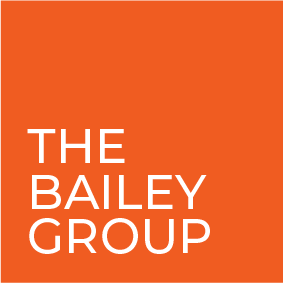
Succession Planning
Succession planning is nothing new. Organizations have been doing this for years and arguably, they do a better job than ever before of preparing internal candidates for new leadership roles. Most leaders today have a probable successor identified, whether that successor be a short time fill in until a longer-term candidate can be found, or someone who could take the reins for the long term. Kudos to you and your organization if you are attending to this critical piece of leadership development.
When successors are being prepared for a C Suite role, the succession planning stakes are that much higher and more complex. We've all heard the statistics about the costs of a failed executive hire. Forbes estimates 2.5 times the salary, which can easily reach into the millions. And anyone reading this article has likely experienced/witnessed the additional costs in human terms. Yet, knowing this, organizations continue to "miss" sometimes when grooming some candidates for the C Suite, even when (in the case of an internal successor) the candidate has been observed and known for years.
Why do these misses occur? Sometimes, the leader who was a superb VP can't "level up" to enterprise-wide, strategic thinking. Sometimes, the leader who connected well internally doesn't spend the time/build credibility with the larger internal and external stakeholders. Other times, leaders struggle with the ego-challenge of leading those who used to be peers/allies. And of course, if a transformational change is required—requiring a rethinking of a business model, a strategic plan, or a customer or digital experience, coming from "within" means shifting a culture that one has had a part in maintaining. After all, culture eats strategy for lunch.
The biggest issue of course, is an organization must predict, from past performance, what someone's future performance will be. And the future performance is in a leadership role that one has never had. The Leadership Pipeline, by Charan, Noel, and Drotter, is a classic book describing the competencies, values and time applications required as one moves up the leadership ladder. This model has helped countless organizations envision what the next leader needs to be and do. However, accurately being able to predict WHO can actually do make the transition up the ladder, is an art and science.
The "art" of this prediction is rooted in a CEO or Board's intuitive sense, from years of observation and experience, who has what it takes to succeed. Since internal candidates are known quantities, we also have actual job performance to evaluate. We have the perspectives of peers, cross functional stakeholders, direct reports, customers, and leaders to inform the choice. How could so many smart, savvy leaders get this wrong? Yet they do.
Because the "art" of selection is just that, an art. It is rife with unconscious and conscious bias. It includes politics, popularity—leading to the "halo" effect, in which unqualified candidates are viewed as "the one." Or the opposite, the so-called "horn" effect, a cognitive bias in which we ascribe negative attributes to someone who may really BE qualified.
So, what's an organization to do? The Bailey Group has partnered with organizations for years to help them add the "science" of selection to their succession planning efforts. With our experience in pre hire selection, we can predict with the aid of valid, reliable, and objective tools (including the Hogan Suite of Assessments), who has the competencies and characteristics that predict success in executive roles. With our decades of coaching experience, we can also help not only identify those candidates but help develop any gaps in competencies and experiences so they can hit the ground running when an appropriate opening occurs. We advise them in their on-boarding, being already aware of what is necessary to succeed. And we help them assess, build, and align their new teams, as well.
Furthermore, our process of succession planning attends to all the stakeholders in the process…candidates, the CEO, and the Board. After all, not all successors who are groomed or throw their "hats" in the ring for a position are selected for an "open-now" role. And no organization wants to risk losing those unchosen high potentials—especially because a candidate believed the process to be unfair, misleading, or got their ego bruised by not being selected immediately.
To prevent this, we facilitate dialog and openness throughout the process to assure there is alignment between stakeholders on each candidate's aspirations, interests/values/purpose, and skills/talents. In this way, candidates, the CEO and the Board are more aware of what is needed in the role, and who has the most appropriate constellation of experiences, competencies and characteristics to fill it. What we have found is our process develops MORE executive leadership talent across the organization, for positions that may be open today, or next year, or after that. The high potentials feel valued and stay motivated for what may come next. Sure, turnover occurs but less often than is feared.
If you are wanting to start or improve your succession planning efforts, growing and developing the talent that's needed for the future of your organization, The Bailey Group would love to partner with you. Give me a call.




